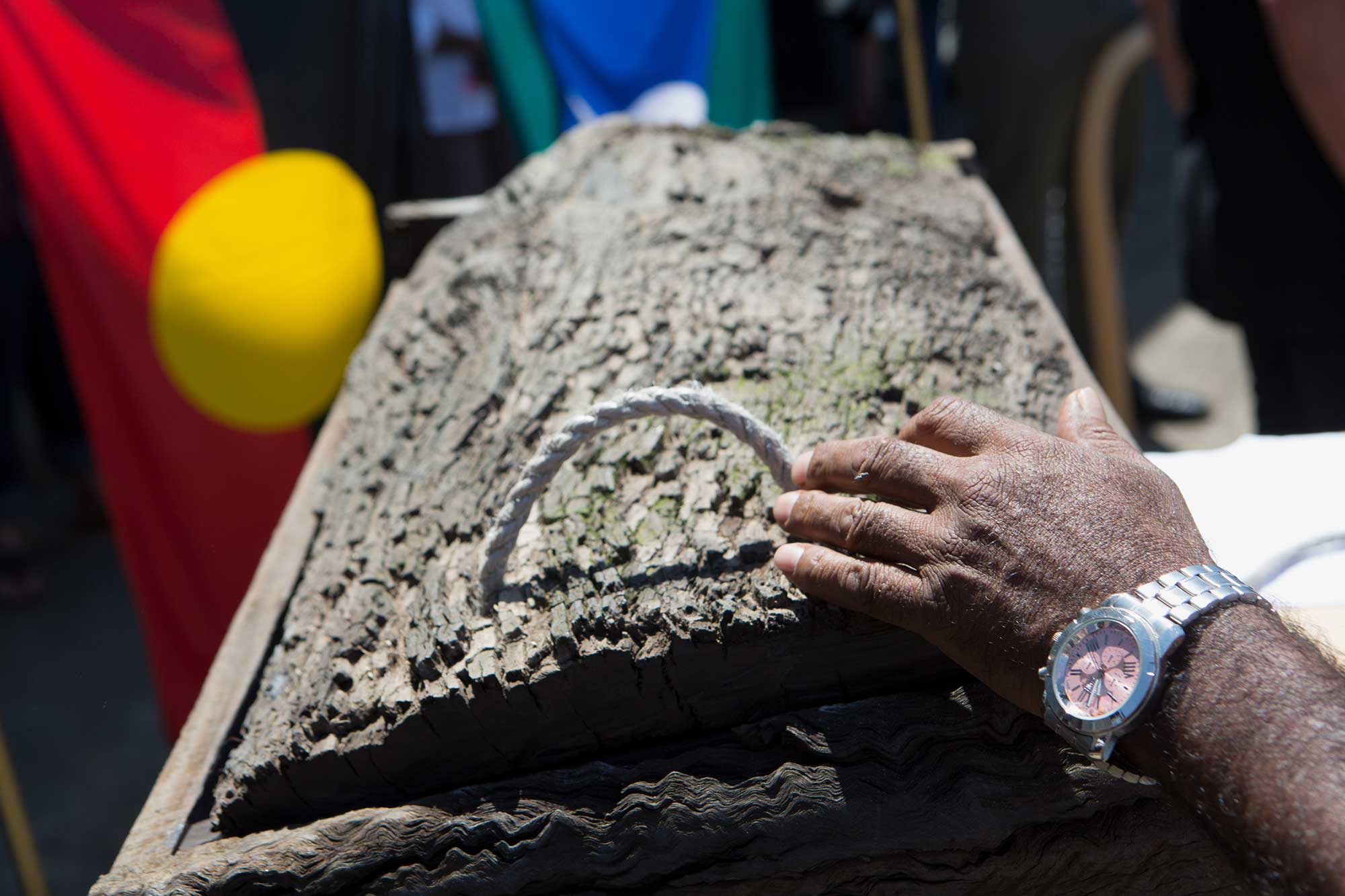
Mungo Man returns to Country. Photo courtesy of the National Museum of Australia.
In February 1974, archaeologist Dr Jim Bowler discovered the remains of Mungo Man at Lake Mungo in the Willandra Lakes region of south-western New South Wales.
The remains, believed to be 42,000 years old, were discovered in a traditional ochre burial pit. After the discovery, the remains were removed from Lake Mungo and relocated to the Australian National University in Canberra.
The Traditional Owners of the Willandra Lakes region, the Mutthi, Paakantji and Ngyiampaa people, had long sought the return of Mungo Man and other ancestral remains back to their Country.
Mungo Man has been instrumental in increasing people’s understanding of how long First Australians have lived on the continent.
As one of the oldest remains ever found anywhere in the world, Mungo Man also represents one of the most important contributions to our knowledge of human history on earth. It is significant, not only to Australia but the world.
In November 2017, their years of tireless work and persistent lobbying became reality when the ANU released the remains of Mungo Man and 104 other people, and started their journey back to country.
The return of Mungo Man to his country was an opportunity to celebrate First Australians as the world’s oldest continuous culture. The Australian Government was pleased to support the return of Mungo Man to Country.
